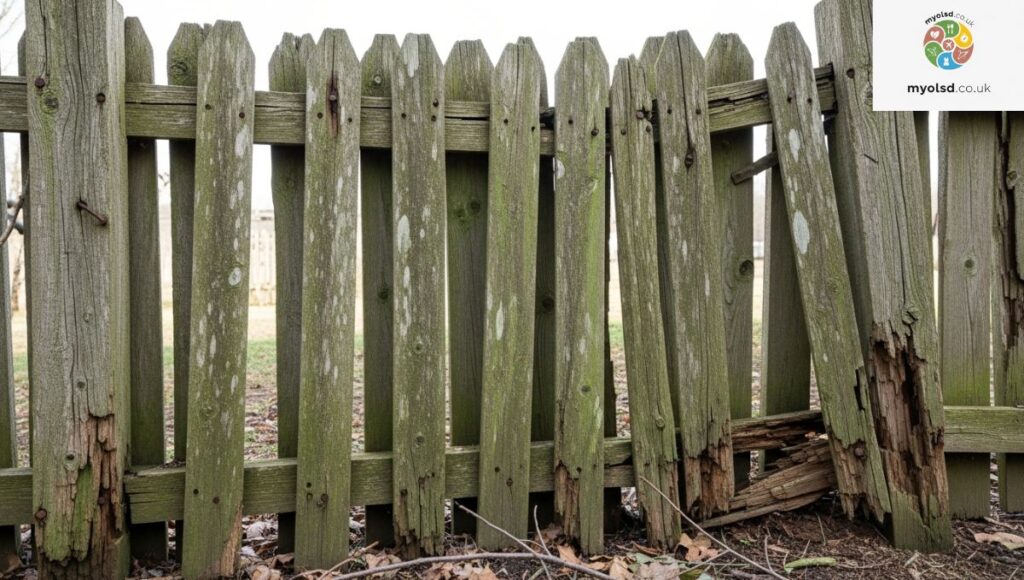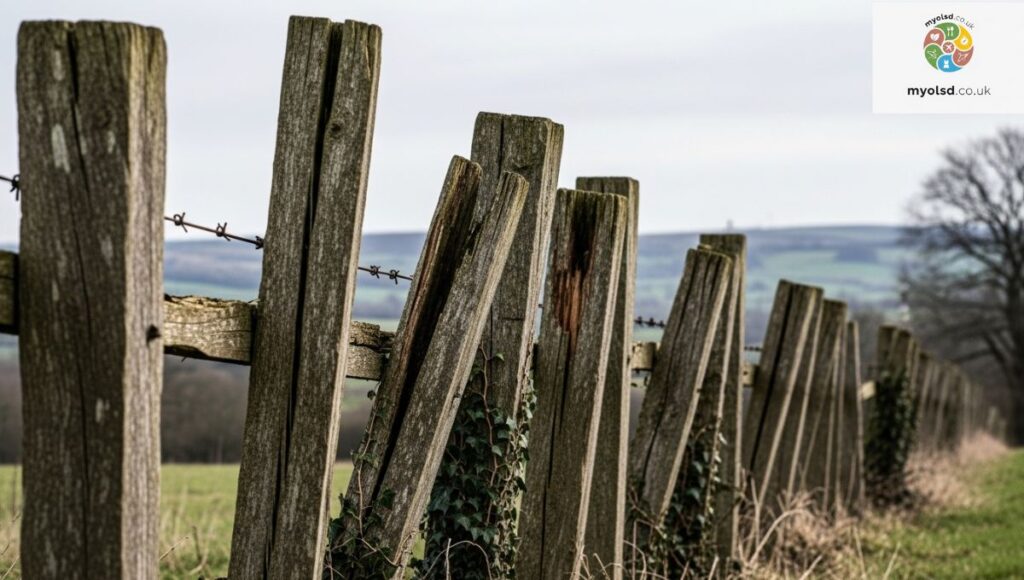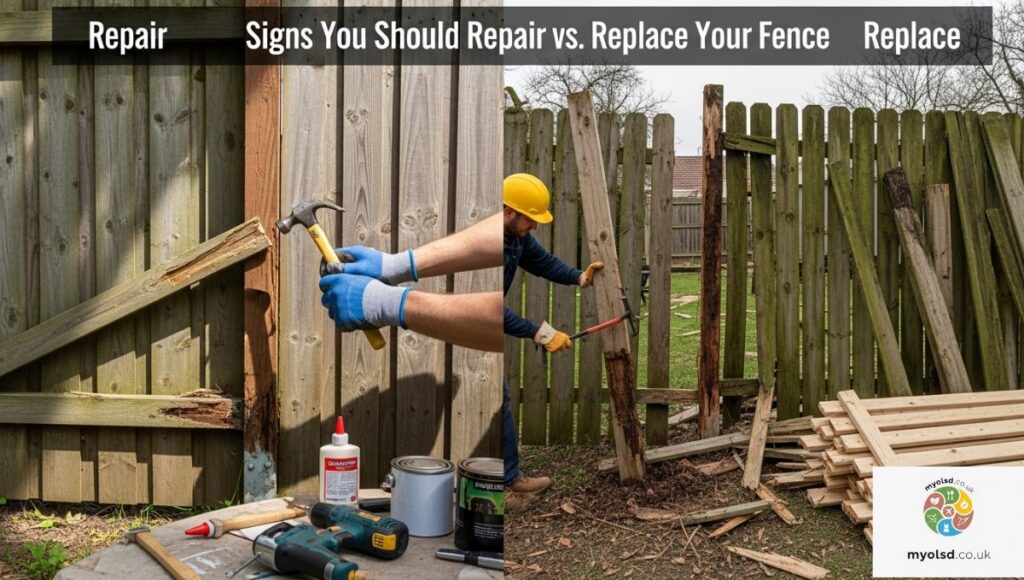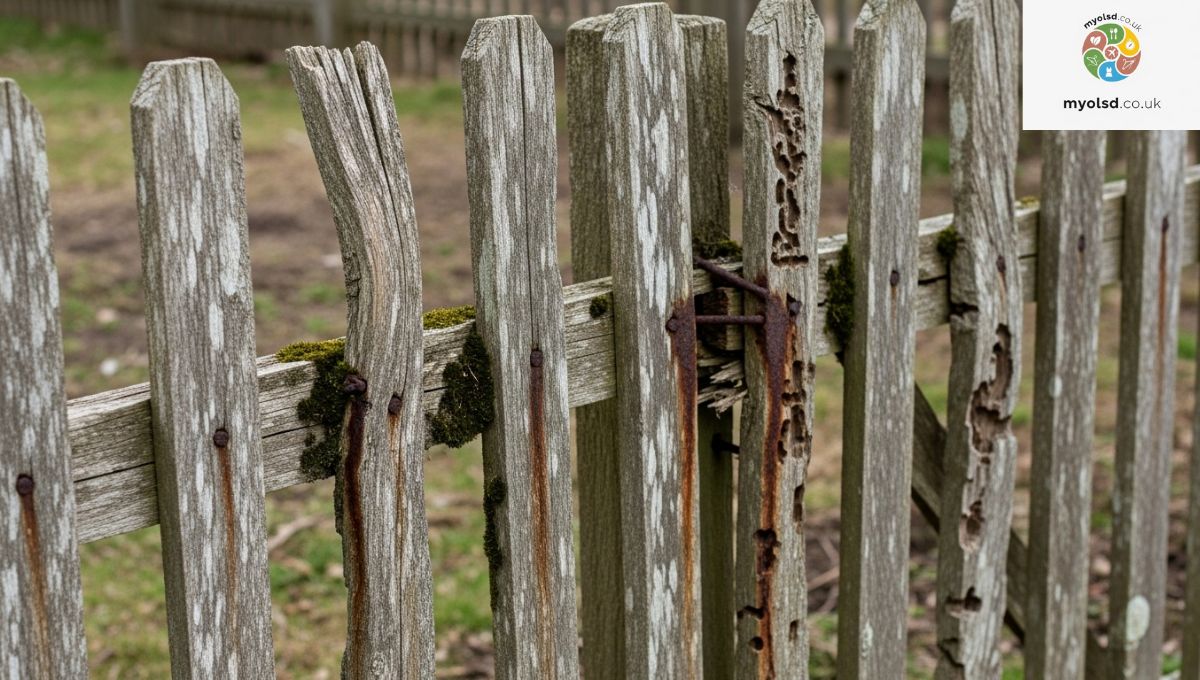Have you ever looked at your backyard fence and wondered if it’s just a little worn or if it’s truly past its prime? Maybe the boards are leaning, the paint is peeling, or you’ve noticed some rotting spots, and it’s starting to worry you. It’s frustrating not knowing if it’s time to repair, replace, or just wait a bit longer. Figuring out how to tell fence is old can save you from costly mistakes and unexpected problems.
In this post, we’ll break down the key signs that show your fence is aging and explain exactly what to look for. You’ll learn simple tips to spot rot, warping, pest damage, and other warning signs, so you can make the right decision for your home. By the end, you’ll feel confident about whether your fence needs attention now or if it still has a little life left.
How to Tell If Your Fence Is Old and Needs Replacing

A fence doesn’t last forever, and understanding its age and condition is crucial. Several indicators point to a fence that has reached the end of its lifespan. From visible rot to structural instability, these signs not only affect appearance but also the safety of your property.
Keeping an eye on these issues allows you to make a proactive decision. Regular inspections, combined with knowledge of common problems like leaning posts or rotting wood, can save money and prevent the fence from collapsing unexpectedly.
1. Visible Rot or Warping (Wood Fences)
One of the most obvious signs of an old fence is visible rot or warping in wooden fences. Over time, moisture, insects, and sun exposure weaken the timber. Look for soft, crumbling wood, black spots, or warped boards. These issues can compromise the structural integrity and reduce the lifespan of your fence.
Even small patches of rot or warping indicate a fence nearing the end of its useful life. If multiple sections are affected, it may be time to consider replacement rather than continuous patch repairs.
Read more Article:Personal Stories on How Essential Oils
2. Rust and Corrosion (Metal Fences)
Metal fences, such as chain-link, steel, or aluminum, are prone to rust and corrosion over time. Surface rust can often be treated, but deep rust spots or pitting weaken the panels and posts. When corrosion spreads, it reduces the fence’s stability and security.
Check for rust near joints, fasteners, or the base of posts. Persistent corrosion can lead to panels bending or posts collapsing, making replacement a safer and more cost-effective option.
3. Leaning or Unstable Posts

A leaning fence is a clear sign of aging. Posts may tilt due to soil erosion, rotting at the base, or heavy storms. Leaning panels affect the fence’s structural integrity and can lead to sections collapsing.
Even if one post is damaged, it can jeopardize nearby panels. Regularly inspect your posts and look for wobbling or shifting. If several posts are unstable, it’s a strong indicator that the fence is old and needs replacement.
4. Missing or Broken Panels
Missing boards, broken panels, or large gaps are more than just unsightly; they signal an aging fence. These issues compromise privacy, security, and property aesthetics.
Wooden fences may splinter or crumble, while metal fences might bend or snap under pressure. If you notice widespread panel damage, continuous repairs will become more expensive than a full replacement.
5. Recurring Repairs and High Maintenance

Do you constantly patch up your fence or repaint sections every season? Frequent upkeep is a strong sign that your fence has aged beyond its prime.
When repair costs add up over time, a replacement becomes more economical. Old fences require more time, effort, and money to maintain, and recurring problems like loose fasteners or warped panels indicate the underlying structure is failing.
6. Outdated Style or Changing Needs
Fences aren’t just functional; they contribute to your home’s overall appearance. An outdated fence style may no longer suit your property’s curb appeal or lifestyle.
Modern designs offer better durability, privacy, and aesthetics. If your fence looks old-fashioned or no longer meets your household’s needs, it’s worth upgrading. A new fence not only enhances appearance but can also improve home resale value and security features.
7. Weather Damage and Pest Infestation
Extreme weather, like storms, heavy rainfall, or strong winds, can weaken a fence over time. Signs of storm damage, such as leaning panels or broken posts, indicate the fence may not withstand future weather events.
Pest infestations, particularly termites and carpenter ants, can also deteriorate wood fences from the inside out. Look for hollow boards, chewed wood, or insect droppings. Once pests compromise the structure, repairs are often temporary, and replacement is usually necessary.
Signs You Should Repair vs. Replace Your Fence

Knowing how to tell fence is old helps you decide between repair and replacement. Minor issues, such as small paint chips or a single warped board, may be fixed with maintenance.
However, if your fence shows multiple signs of aging, rotting wood, leaning posts, rust, or recurring repairs, replacement is more practical. Investing in a new fence ensures long-term durability, enhanced security, and improved aesthetics.
Choosing the Right Fence for Replacement
When replacing an old fence, consider materials and design to prevent future issues. Options include:
- Wood Fences: Classic look, but require regular maintenance and treatment against rot and pests.
- Vinyl Fences: Low-maintenance, durable, and resistant to moisture and pests.
- Metal Fences: Strong and secure, though steel may rust if untreated; aluminum is rust-resistant.
- Composite Fences: Blend of wood and synthetic materials, offering durability and reduced upkeep.
Choosing high-quality materials and professional installation ensures a long-lasting solution and reduces maintenance headaches.
Maintaining Your Fence for Longevity
Even a new fence requires proper care to maximize its lifespan. Some tips include:
- Applying weatherproof stains or sealants every 2 to 3 years.
- Inspecting posts and panels for rot or damage regularly.
- Keeping soil, mulch, and vegetation away from the fence base.
- Treating wood fences against pests like termites and carpenter ants.
- Use gravel or concrete posts for extra stability in soft soil.
Regular upkeep prevents minor problems from escalating into costly repairs.
Conclusion
Knowing how to tell fence is old is essential for maintaining your property’s security, privacy, and curb appeal. Signs like rot, rust, leaning posts, broken panels, and frequent repairs indicate a fence is reaching the end of its life.
Replacing an old fence not only enhances the safety and beauty of your home but also saves money on recurring maintenance. By understanding these signs and choosing the right materials, you can enjoy a strong, durable fence that complements your property for years to come.
FAQS
How do you describe an old fence?
A fence showing rot, warping, sagging, or faded paint.
What is the lifespan of a fence?
Typically 15 to 40 years, depending on material and maintenance.
How can I tell when it’s time to replace a fence?
When it has structural damage, rot, leaning posts, or requires frequent repairs.
How to age a wooden fence?
Expose it to sunlight, rain, and weathering treatments to create a worn, rustic look.

